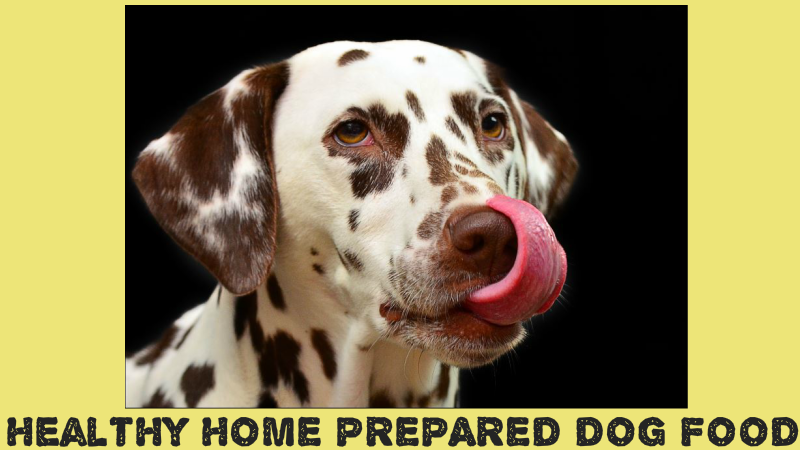Nutrition
Healthy Home-Prepared Dog Food
To sustain and improve your dog’s health, there is no single better way than to move him onto a Healthy Home-Prepared Dog Food diet. These days, there is so much choice available, any decision for what is best for your pooch can sometimes be a daunting task.
Long Term Benefits
Mmmmm, what could these long term benefits be apart from a healthy life, a significantly longer life, and greater enjoyment of that life? There is the added bonus of a significant reduction in lifetime veterinarian costs. And, don’t forget the avoidance of the possibility that your dog could be struck down, diagnosed with a disease that could be directly attributable to dubious quality, commercially available generic dog foods.
You are reading this article because you value the benefits to be gained for your beloved canine from a healthy home prepared dog food regimen. Sure, it will take some time to prepare and maybe a little tedious in the beginning, but the long term benefits you stand to gain will more than makeup for this. And besides, just like all the things we do at home, the more we practice, the faster we get. After a while, it will become second nature.
Specific Dietary Requirements
Just like us, your dog will have a specific dietary requirement that will depend on a number if things. Work out what these things are and you have the framework for the diet itself. The cornerstone of any healthy diet will contain protein, carbohydrates, fat, vitamins, minerals, fiber and of course an adequate volume of water.
Diet plan – Vegetarian or Omnivarian
Dogs are omnivorous in their feeding practices and could theoretically be kept on a specifically designed vegetarian diet plan. Most of us would agree that there is probably a greater benefit to include some meat in this new healthy diet being considered. After all, in the wild, most animals, particularly those that are naturally a pack animal, have become like that to hunt down larger prey. Seems like dogs have a need to consume meat that runs back through the millennia.
Feeding Fequency
Adult domestic pets are often fed once a day, but dividing that feed into two meals adds relationship and interest. For some of the deep-chested breeds, like German Shepherds, Great Danes, and Setters, is may be better to feed them a number of smaller meals through the day rather than one huge one. This can prevent potentially terminal digestion conditions such as bloat.
Availability of Healthy Home Prepared Diet Combinations
With the availability of online information available these days, you can find retail produced scientific diets. These are typically only obtainable from veterinarians. These diets are designed to help pets fight off a large range of diseases, like kidney stones, signs of senility, weight problems, gastrointestinal disruptions, teeth degeneration, diabetes and mellitus, and gum issues.

There are even food items crafted for long-coated types, in addition to life-stage solutions. You might also pick from a range of holistic diet plans that boast no artificial ingredients. And for the dogs that suffer from allergic reactions, there are specialized diets for them as well.
Required Nutrients
Normally, pet dogs aren’t challenging to feed, and they prosper on a diet plan not altogether too different from a similar diet plan for people, albeit with a little more protein. The trick to getting this new “dog diet health plan” incorporated into the day to day life with you and your dog is to offer a balanced diet plan that supplies all necessary goodness in suitable proportions to one another. This of course will vary depending on the exercise they do, their breed, the development stage in life they are at and their current health.
Carbohydrates
Carbohydrates, by methods of prepared cereal starch or sugar, offers as much as 70% by weight of the canine’s food (after taking away any water present) or about two-thirds of the calories. Dog biscuits, pasta and rice are 3 helpful energy foods for pets, and rice is a beneficial food item for canines allergic to wheat. These dog biscuits can be a combination of commercially available and home made ones. Let’s face it, the commercially available dog biscuits are very convenient, and will help your dogs diet have a little decadent variation!
Proteins
Proteins within meat and plants (although far better from meat) improve body tissue, perform “repair work” and produce hormones. The dry matter compliment of dog food should contain a minimum of 15% protein, of which the majority ought to originate from animal foods (meat and dairy products), or high-quality vegetable protein like soya.
Minerals
Minerals are periodically described as “ash” on dog-food labels. The important ones are sodium (common salt), phosphorus and calcium chloride in a well balanced combination. Calcium and phosphorus constitute many of the mineral matter of bone and must be used at the rate of about 3% calcium/phosphorus in the diet plan. An extreme amount of calcium in the diet, particularly in large-breed puppies, can result in skeletal irregularities, while an extreme amount of phosphorus (discovered in high meat and offal diets) could potentially trigger eclampsia in lactating female pet dogs.
Extra vital minerals for excellent health, like zinc and copper, occur naturally in meat, cereals in addition to other components of a well balanced diet plan.
Vitamins
Vitamin A (likewise called retinol) is essential for development and vision, while vitamins of the B group are important for the maintenance of the nervous system.

Vitamin D helps the body develop calcium, required for healthy bones and teeth, as is phosphorus. Vitamin E (tocopherol) is necessary for the levelling of cell membranes. Given that canines can create their own vitamin C through their glandular system, a smaller amount of ascorbic acid can still be important for maintaining healthy connective tissue and skin, although this does not necessarily need to be an essential part of the diet plan.
Fat contributes to food palatability, however remains in truth only necessary as a source of the important fatty acids (EFAs, also referred to as polyunsaturates) which are essential to maintain body health. They work primarily by dealing with water loss through the skin. A shortage in EFAs can cause reproductive problems, as well as coat and skin therapeutic issues.
Fat
Fat contributes to food palatability, however remains in truth only necessary as a source of the important fatty acids (EFAs, also referred to as polyunsaturates) which are essential to maintain body health. They work primarily by dealing with water loss through the skin. A shortage in EFAs can cause reproductive problems, as well as coat and skin therapeutic issues.
Fiber
A lack of fiber in the diet might result in bowel problems, especially in elderly and or inactive pet dogs. This in turn contributes to other gastrointestinal problems cause by slow bowels. Fiber is made available in this healthy home prepared meal plan through the indigestible plant matter in foods like prepared and raw veggies as well as cereals.
Balancing Act of a Healthy Home-Prepared Dog Food Regimen
It’s important that the balance of nutrients provided to a pet dog is correct, since excesses could cause as numerous health concerns as insufficiencies. If your canine gets more calories each day than his body needs, he will get fat. Just as in human beings, obesity has a very high correlation with many canine diseases. Heart issues, joint conditions and a decline in lung function are just a few of a long list of complications due to obesity.
Just How Much Must I Feed to My Dog?
This is not a one answer for every single dog. It will depend on your dog’s :
Size
- Size.
- Activity level.
- Age.
- Personality.
- Temperature of surroundings
Young puppies and those being worked, or which are very active every day, may require more food (calories) each day than the typical pooch, while an old, inactive canine will require less.
Tracking the Calories.
In a healthy canine, the amount of calories he consumes will be balanced by the number of calories that his body utilizes daily. An underfed canine will steadily loses weight and condition. This is due to his body pulling on the reserves of fat and protein to make up for the insufficiencies in his diet plan.
The quantity of calories a pet dog requires daily depends on his size, life stage, activity level and uniqueness. As an example, a little healthy adult canine with two hours of regular activity a day demands anything in between 125 and 700 calories everyday depending upon his size; a huge dog will need from 1,400 each day, depending upon size.
Puppies and Lactating Females
Puppies will require more calories in relation to their body weight considering that they are growing fast. Lactating female pet dogs need some 50 to 60% more calories than typical, and highly active (working) pet dogs need at least 40% more calories than regular reasonably energetic requirements.
When Should I Feed My Dog?
Many owners feed either in the night or the early morning, and often both, determined by their dog’s age needs or individual preferences. Some breeds of dogs, fare better with their daily ration broken into two or perhaps 3 meals, to prevent other dietary complications such as bloat. Some owners swear that a single meal per day is perfect for their pooch. So, this question can only be answered by you after taking into account age, breed and maybe a lesser extent how often you want to be treating your dog.
Regular Meal Times or Not
This is another question that only you as the dog owner can really answer. There are arguments that support an irregular feeding schedule. Folk that believe this state that their dog will not be anxious if the feeding time changes as they are not used to any one strict feeding time. This will work well for a family that may have engagements outside of the home and cannot stick to a strict meal time. This setup tends to encourage Fido to eat when he can and may be helpful to dissuade picky eating.
Feeding Recommendations.
When feeding your dog, here are a couple of standard guidelines to adhere to.
- Place a feeding mat, or newspaper, under feeding bowls, since many dogs are careless eaters.
- It is suggested to introduce changes to diet bit by bit to avoid digestive issues.
- Never provide spiced food or that to which any alcohol has been added.
- To avoid choking, eliminate all bones from fresh meats and fish.
- Fresh, clean drinking water need to constantly be available.
- Ensure that specific food and water bowls are kept clean, as any uneaten food may contaminate the next meal you have worked hard to prepare.
- Absolutely no chocolate meant for human consumption. This is poisonous to dogs.
If your canine shows an unwillingness to eat this new home prepared diet, and you have followed the steps highlighted above, check with your vet. He may be able to suggest a different approach so you can still keep up to your objective of that healthy home prepared diet for your dog. Remember the benefits… A long and rewarding life to spend with your and your family.

